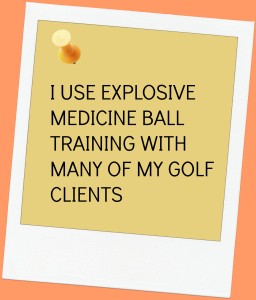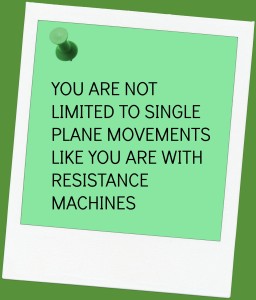Medicine balls have been around for thousands of years and yet a lot of people have forgotten about them when they to the gym for their workout.
This is a tool I regularly use with all my clients as everyone from the elite athlete to an injured worker can literally use it.
This simple piece of kit is so unique compared to other fitness equipment out there, you can jump with it, throw it around and slam it down to name a few.
Think about doing that with a dumbbell!
Medicine balls are also referred to as Med balls and Fitness balls and typically look and feel like a weighted basketball.
The name is thought to have originated around the late 19th century and early 20th century when the terms ‘health’ and ‘medicine’ were synonymous. Since then this ball has been used extensively in the rehabilitation and strength and conditioning world.
One of the main reasons I use these balls with my personal training clients is because it is so versatile. You are not limited to single plane movements that you may experience when using machines or free weights.
The Medicine ball enables you to closely simulate the pattern of movement and speed of that movement that occurs in the sport and work environment. This allows the training to be very specific.
For example, a golfer can use a light medicine ball to mimic the golf swing allowing them to improve their power and rotation through the exercise.
The stabilizers of the joints are also greatly activated during medicine ball training. This results in considerably more nervous system activity and consequently a better transfer to sports and work environment.
An over-use of resistance machine training will only use the prime movers or big muscle groups whilst neglecting the small stabilizer muscles around the joints and may over time increase the susceptibility of injury in these muscles.
Medicine ball training is great for sports specific conditioning as it allows the reproduction of the hand-held patterns used in many sports like golf, tennis and squash.
They are also very useful for rehabilitation because the injured patient can reproduce the exact movement pattern that injured them in the first place. For example, if they were injured lifting a box from the ground they could progressively lift heavier medicine balls from the ground becoming functionally stronger in that movement.
If you are keen to start using the medicine ball then one of the key parameters is the number of repetitions performed. To develop strength you should work in the strengthening zone, which is recognized as 8-12 repetitions.
Children can develop strength with 10-15 repetitions. Most individuals who use medicine balls are going to be training in the endurance or power zones, as the balls used are commonly lighter than when training with dumbbells.
To perform endurance training, you should perform more than 12 repetitions. Sets should last at least 60 seconds in duration to ensure the correct energy system is being trained. The aerobic system is primarily responsible for maintaining prolonged contractions of the muscular system. A good example of this would be rotator cuff exercises to strengthen the shoulders for long-distance swimming.
To develop explosive strength, sets should never last longer than 12-15 seconds because the anaerobic energy system is exhausted in about 12 seconds.
In general, keep your repetitions lower if you are using larger, heavier medicine balls.
The faster you move with the medicine ball, the more repetitions you can perform but make sure you maintain good form because you do not want to program the nervous system with slower, poor quality movements. I use explosive medicine ball training with many of my golf conditioning clients.
Finally, the speed of movement is also an important parameter with this type of training.
The faster you move in your work or sport, the faster you should move the medicine ball in your workout. If you are rehabilitating an injury, always start with slower movement speeds and master the mechanics of the exercise before progressing to moderate and fast speeds.
The faster the speed of the exercise, the greater the involvement of the nervous system and therefore the more recovery time is going to be needed. If you’re training very explosively then allow at least 2-3 minutes for recovery.
I have listed some of my favourite medicine ball exercises. So pick up that medicine ball and ask a Fitness Professional to guide you through these moves:
- Upper Body Russian Twist
- Wood Chopper
- Abdominal Crunch with throw to partner
- Push ups with hands on medicine balls
- Oblique Toss throw to partner
- Medicine ball slam into floor
- Explosive Back Toss

